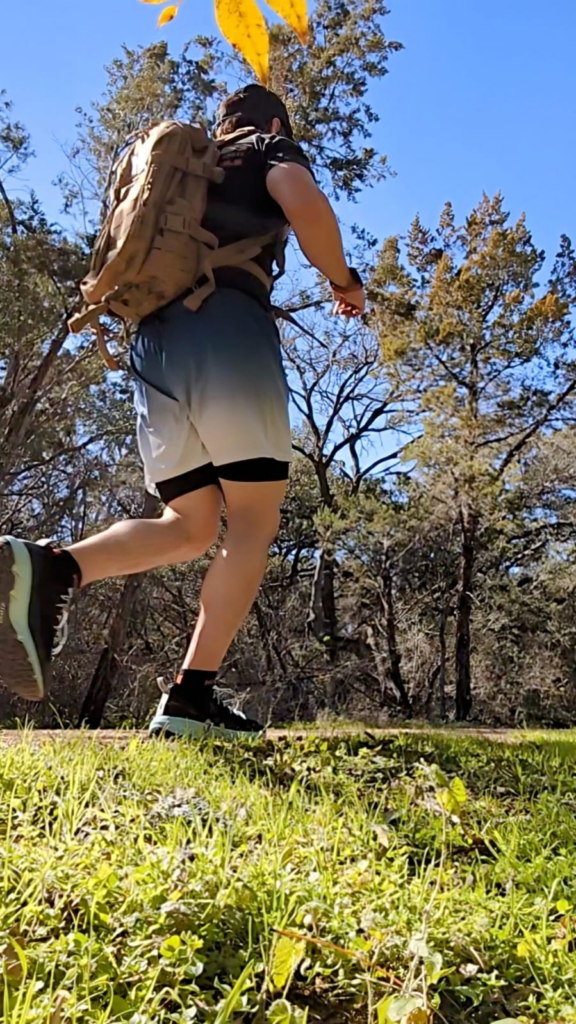There was a time when Rucking was associated with military personnel, who carried their necessities in large “rucksacks”. But this simple yet effective exercise is gaining traction among everyday fitness enthusiasts as a way to torch calories, build strength, and boost mental resilience. What exactly is rucking, and what are the benefits that have people trading in their treadmills for backpacks? Keep reading below
What is Rucking?
Rucking is essentially walking with a weighted backpack, also known as a ruck. It’s not just about lugging groceries from the car, though. We’re talking about purposeful walks and runs with a weighted pack. The weight of the ruck can vary, but it’s typically between 10% and 20% of your body weight. You can ruck on any terrain, from flat sidewalks to challenging trails, making it a versatile workout option.

The Benefits of Rucking
The benefits of rucking are numerous and far-reaching. Here are some of the key reasons why you should consider adding rucking to your fitness routine:
- Cardio Boost: Carrying a weight while walking increases your heart rate and oxygen intake, giving your cardiovascular system a serious workout. Studies have shown that rucking can burn up to 500 calories per hour, making it a great way to shed fat and improve your overall fitness.
- Strength and Endurance Builder: The added weight of the ruck challenges your muscles, making them work harder with each step. This leads to increased strength and endurance in your legs, core, back, and shoulders. Additionally, rucking engages your stabilizer muscles, which improves your balance and coordination.
- Low-Impact Exercise: Unlike running, which can be hard on your joints, rucking is a low-impact exercise that’s suitable for people of all ages and fitness levels. This makes it a great option for those who are looking for a challenging workout that’s easy on their knees and ankles.
- Mental Toughness: Rucking can be mentally challenging, especially when you’re carrying a heavy weight over long distances. However, pushing through the discomfort can help you build mental resilience and grit. This can translate into other areas of your life, helping you to persevere through challenges and achieve your goals.
- Stress Relief: Exercise is a well-known stress reliever, and rucking is no exception. The rhythmic motion of walking and the focus required to maintain proper form and balance can help to take your mind off of your worries and clear your head.
- Versatility and Accessibility: One of the great things about rucking is that it’s incredibly versatile. You can do it anywhere, anytime, and with very little equipment. All you need is a backpack and something to weigh it down. This makes it a great option for people who are short on time or money, or who simply enjoy being outdoors.

Getting Started with Rucking
If you’re new to rucking, start with a light weight and gradually increase it as you get stronger. It’s also important to choose a comfortable backpack that fits properly. Once you have your gear, head out for a walk and don’t be afraid to take breaks if you need them. As you get used to the weight, you can start to increase the distance and intensity of your rucks.
Rucking Tips for Beginners
- Start with a light weight and gradually increase it. Consider “microloading”, increasing your weight by just 1 or 2 pounds every time.
- Choose a comfortable backpack that fits properly. Typical rucksacks have extra thick shoulder and lower back pads. You can also look for one that features both a chest and waist strap so that the backpack’s weight is evenly distributed across your upper body.
- Other gear can make your rucks more comfortable. Using iron plates distributes the weight in your back and are less bulky. Accessories like hiking poles and ruck straps can be prove to be very helpful.

- Choose the right shoes and socks to protect your feet (Use code SOLSTIZIOFIT for 15% off)
- Listen to your body and take breaks if you need them. This is not a race, it’s a workout. There is no shame in taking breaks.
- Focus on good form and posture. This will protect your muscles and spine.
- Start with short distances and gradually increase them.
- Think about your nutrition and hydration while rucking. Even as a low impact exercise, it requires a considerable amount of energy for long periods of time, so take water and snacks with you. Tailwind, LMNT y Skratch Labs are my go-to
- Find a buddy or, even better, a group to ruck with. There are rucking groups in almost every major city, and many organize weekly or monthly meetups

- Make it fun! There are many different ways to ruck, so find what works for you. If you are up for an extra challenge, sign up for an Endurance event that features a Ruck. The most popular ones are Hurricane Heats organized by Spartan (code SAP-CARLOS for 20% off registration) and GoRuck Challenges.

Rucking is a great way to get a challenging workout that will benefit your entire body and mind. So why not give it a try? You might just be surprised at how much you enjoy it.
I hope this blog article has inspired you to incorporate rucking into your fitness routine. My goals for 2024 include completing a some Rucking events, including:
- Spartan Sprint with a Ruck in January
- GoRuck Light Challenge y 12 miler in February
- Hurricane Heat 12hrs in May
- Deka Fit Ruck division in June
- Hurricane Heat 24hrs in June
- Hurricane Heat 4hrs tbd
If you have any questions, please feel free to leave a comment below.
Happy rucking!



